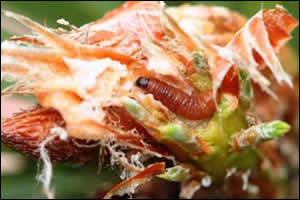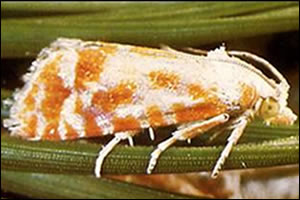PINE SHOOT MOTH AND CATERPILAR
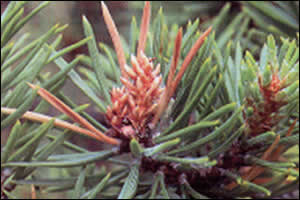
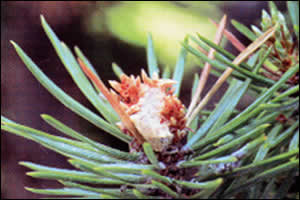
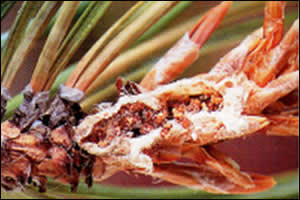
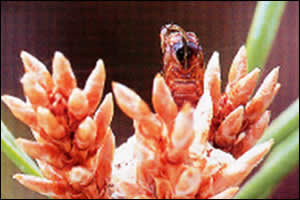

This sequence shows the damaging work of the Pine Shoot Moth, from the damaged candle eaten by the caterpillar to the hatched moth as it climbs the shoot.
The European pine shoot moth, Rhyacionia buoliana is a very serious pest of mugo and red pines. Austrian, Scots and Japanese black pines also may be badly damaged. It was first observed in 1913.
Symptoms and Diagnosis
The damage inflicted by all species of Rhyacionia is similar: the tips of terminal and lateral shoots are killed as a result of larval boring, initially into the base of the needles or buds, and then into the shoot itself. Attacked buds can be stunted and tend to be coated with resin. Silk webbing is often present. Mining or tunnelling may be difficult to find due to copious resin flow.
Early indications of attack are yellowing of needles near the tips of twigs and often clear deposits of pitch around and between new bud clusters. Later, dead buds and dead or deformed shoots result in striking deformity of the tree.
Life Cycle
In late July or early August for a period of several weeks, adult moths lay small, flattened eggs on new shoots near the base of the needles or bud scales. The young hatch and spin resin-coated webs between the needles and twigs where they bore into the base of needles and begin feeding. As the larvae grow they move to the buds where they continue to feed and then bore into the tips where they overwinter. The boring process causes a distinctive crust of resin to form, which can be diagnostic of the presence of pine shoot moth. The following spring the larvae emerge from hibernation and continue feeding until they pupate in May or June. During this spring period is when most damage occurs. There is one generation per year.
Treatment
- Keep plants healthy. Dry weather and poor soil conditions encourage damage by tip moths; therefore, water thoroughly.
- Pines should be planted in well-drained soil that is slightly acid. Pines should not be planted in continually wet soils.
- Prune or handpick infected shoots and dispose of material, thus eliminating the larvae.
- Insecticide. In early spring, spray with an insecticide and follow up with another application in late spring. Recommended are sprays containing pyrethrins.
